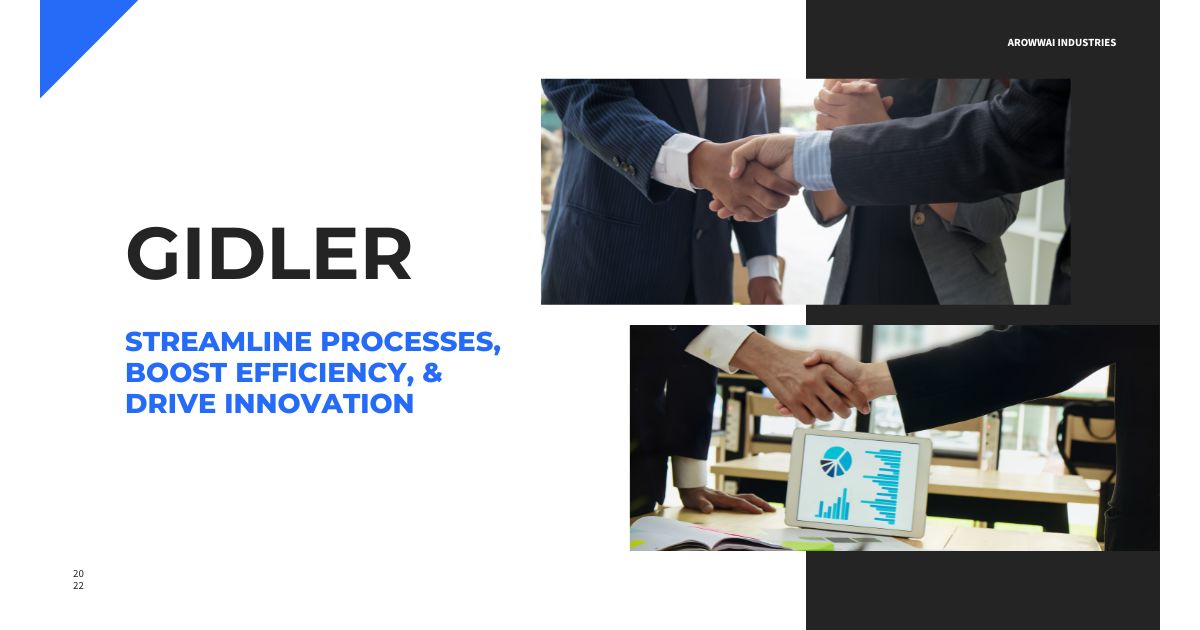Gidler – Streamline Processes, Boost Efficiency, & Drive Innovation
Gidler is a term that has been gaining traction in various fields, yet many still need to learn what it entails. This comprehensive guide aims to delve into the intricacies of gilder, exploring its origins, applications, and impact across different industries. Whether you’re a curious newcomer or looking to deepen your understanding, this article will provide valuable insights into the world of gilders.

What is Gidler?
Gidler is a multifaceted concept that can refer to different things depending on the context. At its core, gilder is often associated with innovation, technology, and efficiency. The term is derived from “guiding” or “streamlining” processes to achieve optimal results.
Etymology of Gidler:
The word “idler” is believed to have originated from a combination of “guide” and “handler.” It encapsulates the essence of managing and directing processes with precision and care. Over time, gilder has evolved to encompass a broader range of meanings, particularly in technology and business.
Applications of Gidler:
Gidler’s versatility makes it applicable in various domains. Here are some key areas where Gidler plays a crucial role:
1. Technology and Software Development:
In the tech industry, gilder is often associated with tools and platforms that streamline software development processes. These idler tools help developers manage code, track bugs, and ensure seamless integration and deployment.
Gidler Tools:
Version Control Systems: Tools like Git allow developers to track code changes and collaborate efficiently.
Continuous Integration/Continuous Deployment (CI/CD): Platforms like Jenkins and Travis CI automate code testing and deployment.
Project Management Software: Tools like Jira and Trello help teams organize tasks and manage projects effectively.
2. Business Process Management:
Gidler is also a crucial component in optimizing business processes. By implementing Gidler’s strategies, companies can enhance workflow, reduce costs, and improve efficiency.
Key Strategies in Business:
- Process Mapping: Visual representation of workflows to identify bottlenecks and areas for improvement.
- Automation: Utilizing software to automate repetitive tasks, freeing up human resources for more strategic activities.
- Performance Metrics: Establishing key performance indicators (KPIs) to monitor and evaluate the effectiveness of business processes.
3. Education and Training:
In education, Fidler refers to tools and methodologies that enhance learning experiences. These Gidler approaches are designed to make education more engaging, accessible, and effective.
Examples in Education:
- E-Learning Platforms: Systems like Moodle and Coursera that offer online courses and resources.
- Gamification: Incorporating game elements into learning to increase motivation and engagement.
- Adaptive Learning Technologies: Software that adjusts the learning experience based on students’ needs.
4. Manufacturing and Production:
Gidler techniques in manufacturing aim to improve production efficiency, reduce waste, and ensure quality control. Lean manufacturing and Six Sigma are prime examples of Gidler methodologies applied in this field.
Lean Manufacturing Principles:
Value Stream Mapping involves Identifying and mapping all steps in the production process to highlight non-value-added activities.
- Just-In-Time (JIT) Production: Reducing inventory costs by producing only what is needed when it is required.
- Continuous Improvement (Kaizen): Encouraging constant, incremental improvements in processes and products.
Benefits of Implementing Gidler:
Adopting Gidler principles can bring about numerous benefits, regardless of the industry. Here are some of the most notable advantages:
Increased Efficiency:
Gidler techniques are designed to streamline processes, eliminate redundancies, and enhance productivity. This leads to more efficient operations and better resource use.
Cost Savings:
Companies can significantly reduce costs by optimizing workflows and reducing waste. Gidler methodologies often lead to more sustainable practices, which can also result in financial savings.
Improved Quality:
Focusing on continuous improvement and quality control ensures that products and services meet high standards. This can lead to greater customer satisfaction and loyalty.
Enhanced Collaboration:
Gidler tools and strategies often facilitate better communication and collaboration among team members. This is particularly beneficial in complex projects that require coordinated efforts across different departments.
Scalability:
Implementing Gidler principles allows businesses to scale their operations more effectively. Streamlined processes can easily be expanded to accommodate growth without compromising quality or efficiency.
Challenges in Adopting Gidler:
While the benefits are clear, adopting gilder principles can also present certain challenges. Understanding these potential hurdles can help devise strategies to overcome them.
Resistance to Change:
One of the biggest obstacles is resistance to change. Employees and stakeholders may be reluctant to adopt new methodologies, especially if they are accustomed to traditional working methods.
Initial Costs:
Implementing Gidler tools and strategies may require significant upfront investment. This includes costs related to software, training, and process re-engineering.
Complexity:
Some girdler methodologies, such as Six Sigma, can be complex and require specialized knowledge. Without the right expertise, implementation can be challenging.
Continuous Monitoring:
Gidler principles often require ongoing monitoring and adjustment. Maintaining this level of oversight can be resource-intensive and demanding.
Case Studies of Gidler Implementation:
To better understand the impact of Gidler, let’s explore some real-world examples of its implementation.
Case Study 1: TechCorp
TechCorp, a leading software development company, implemented Gidler tools to streamline its development process. By adopting a CI/CD pipeline, they reduced deployment times by 50% and improved code quality through automated testing.
Case Study 2: HealthPlus
HealthPlus, a healthcare provider, utilized gilder strategies to optimize its patient management system. Automating appointment scheduling and patient records improved patient satisfaction and reduced administrative costs by 30%.
Case Study 3: EduLearn
EduLearn, an e-learning platform, incorporated Gidler methodologies to enhance course delivery. Through adaptive learning technologies and gamification, they increased student engagement and course completion rates by 20%.
Future of Gidler:
The future of Gidler looks promising, with advancements in technology paving the way for even more innovative applications. Here are some trends to watch out for:
Artificial Intelligence and Machine Learning:
AI and machine learning will play a significant role in Gidler, offering more sophisticated process optimization and decision-making tools.
Internet of Things (IoT):
IoT devices will enable more granular monitoring and control of processes, leading to greater efficiency and real-time adjustments.
Blockchain Technology:
Blockchain can enhance transparency and security in Gidler applications, particularly in supply chain management and business transactions.
Remote Work Solutions:
As remote work becomes more prevalent, gilder tools will continue to evolve to support distributed teams and virtual collaboration.
Also Read: Margie Washichek – A Remarkable Journey
Conclusion:
Gidler is a powerful concept with wide-ranging applications across various industries. By understanding its principles and benefits, businesses and individuals can harness its potential to drive efficiency, innovation, and growth. As technology continues to evolve, so will the possibilities for gidler, making it an exciting field to watch and explore.
Incorporating gilders into your processes may seem daunting initially, but the long-term benefits make it a worthwhile investment. Whether you’re in tech, business, education, or manufacturing, gilder can provide the tools and strategies needed to excel in a competitive landscape.


